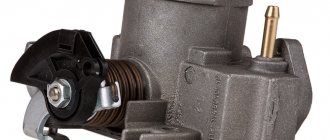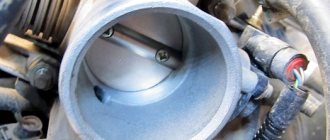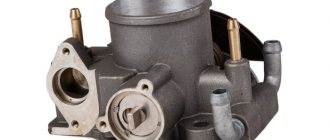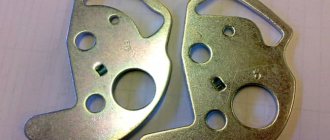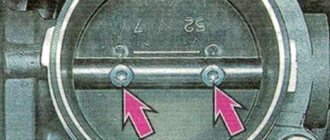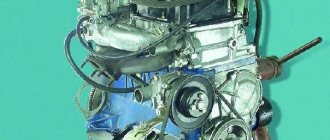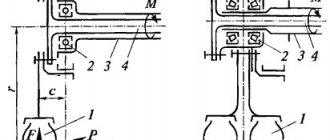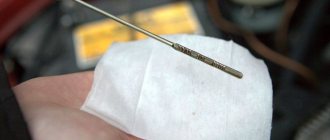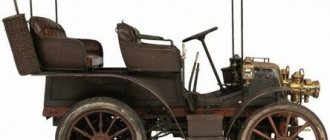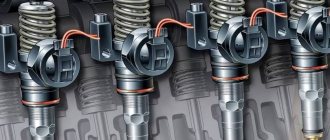The throttle valve is a structural element of the fuel system of a car with a gasoline internal combustion engine, regulating the flow of air masses and the formation of the air-fuel mixture. This element of the intake system is located between the manifold and the air filter. The throttle is one of the main components of a car's power system.
Throttle valve
The throttle valve is a kind of air valve that allows you to control the pressure in the system. If the valve is open, the pressure level tends to atmospheric, and when closed, it decreases, approaching vacuum. Thus, the throttle valve also regulates the operation of the vacuum brake booster. This means that the smaller the valve opening angle, the lower the speed.
Throttle valve device
The throttle valve is a round plate that has the ability to rotate 90 degrees around itself - this is a cycle from opening to closing. It is located in a housing containing:
- Drive - mechanical or electric;
- Position sensor - throttle potentiometer;
- Idle speed regulator.
Together, all these components form the throttle assembly or throttle body.
The damper body is quite complicated. After all, it itself is part of the cooling system. It is the throttle assembly that opens the channels through which coolant circulates. Equipping the body with special pipes connected to the ventilation system and the fuel vapor recovery system makes the design even more complex. This system should be studied in more detail.
Why is remote sensing needed?
DZ is an element of the fuel system of a gasoline engine. Its main task is to dose the air supplied to the cylinders of the internal combustion engine and form the fuel mixture. This element is installed after the air filter and in front of the intake manifold.
Appearance of the throttle valve
In fact, the DZ is used as an air bypass valve. If it is in the open position, then there is no excess pressure in the intake system. If the damper closes, negative pressure is formed in the system.
There are two main ways to control the throttle:
- mechanical;
- electric.
Let's consider both options for the mechanism.
Mechanics
This drive option is awarded to cars in the budget category. This is how the manufacturer reduces the cost of the car for the buyer. The principle of operation of the throttle valve with mechanics is quite simple: direct control of the throttle valve is carried out through the accelerator pedal using a flexible steel cable.
Mechanical drive DZ
The components of the remote control are arranged in a single module. It combines the housing, the DS itself fixed on a rotating axis, the idle speed regulator, and the DS position sensor.
You need to know that the engine cooling system heats up the engine housing.
The regulator provided in the design is responsible for the function of regulating the speed of the power plant. Its task is to change the volume of air flowing past the damper when starting any additional equipment. Its main elements are a valve and an electric motor.
Electrics
Modern cars are characterized by the use of a more expensive but efficient electric drive. By installing such a unit, designers achieve the required amount of torque. This happens in all main modes of the power plant. It is also possible to achieve a reduction in fuel consumption, and compliance with safety and clean emissions requirements.
Electric drive DZ
Features of remote control driven by an electric motor are as follows:
- there is no direct contact between the accelerator pedal and the remote control;
- The idle speed is adjusted by moving the remote control.
Idle speed control
Throttle valve on a car
Using the idle speed regulator, the required crankshaft rotation speed is maintained with the throttle completely closed. For example, if the motor heats up or the load increases, additional equipment is connected to the process.
The regulator is designed as follows: a housing in which a stepper electric motor is attached, connected to a conical needle. While the engine is running at idle speed, the needle, like a piston, regulates the cross-sectional area of the air channel.
In single injection
The design of a mono injection is similar to a carburetor - the air-fuel mixture is formed in the mixing chamber. Unlike a carburetor, the mixture composition is controlled electronically. The throttle valve regulates the amount of air that enters the cylinders. Mass air flow (MAF), throttle position (TPP) and crankshaft position (CPPV) sensors provide the controller with all the necessary information to calculate the amount of fuel. At the command of the controller, an electrically controlled nozzle injects the required amount of fuel, which, when mixed with air, forms an air-fuel mixture.
Potentiometer
In other words, the potentiometer changes the opening angle of the damper and thereby affects the controller. When the damper is closed, the voltage does not exceed 0.7 V, and when fully open it reaches 4V. This is how fuel supply is controlled.
If the throttle valve stops responding to impulses emanating from the position sensor, the following breakdowns may occur:
- Floating speed when the engine is running. Increased idle speed;
- The engine stalls when switching to neutral;
- Uncontrolled fuel consumption;
- The engine is running at half power;
- The CHEK light is on - check if the throttle valve is working correctly.
Symptoms of a faulty electronic throttle
Like any other car part, the throttle control system can also be subject to damage and wear. There are signs and symptoms to look out for to protect your vehicle from further damage.
- The car may have jerks and dips during acceleration, and it may jerk when accelerating. Possible misfires. If you notice any of these symptoms or rough shifting, there may be a problem with the electronic throttle.
- Problems with the electronic throttle control can cause problems when shifting gears. This could be a sticky feeling or slow shifting between gears. There may be a problem with getting out of a certain gear, as if it is stuck.
- Another sign of an ED malfunction is problems with displaying power characteristics. This means that the car will display incorrect data or data that is not possible in the current situation.
- The engine may stall for no apparent reason. This could be a sign of a serious problem and could even cause engine damage, so this problem needs to be fixed as soon as possible.
- An additional sign that may indicate you need to have your E-Gas checked is if you experience rapid and unintentional increases in speed while driving. This is a big safety concern because it can happen when you are behind another car or on a turn.
- The Check Engine light may be on on the dashboard. This is a sign of some kind of malfunction detected by the ECU. You can find out the error and the cause of the malfunction using a diagnostic scanner or an ELM327 adapter with the Torque program.
- The final symptom of a faulty electronic throttle control is a sharp increase in fuel consumption. If you realize that you cannot drive as many kilometers on the same amount of fuel as before, this is a clear sign that you need to have your car diagnosed.
How to fix the problem
If you suspect that the throttle valve is faulty, you need to check the entire assembly where it is attached. To do this, strictly follow the following algorithm:
- Disconnect the battery negative terminal.
- It is necessary to drain the liquid from the cooling system.
- Remove the hoses from the throttle body.
- Remove the damper drive cable.
- Release the potentiometer from the pads and the idle speed control.
- Remove the throttle assembly.
- Check the condition of the throttle valve gasket and other components of the assembly.
- If necessary, replace some components or the entire assembly.
- Reassemble the structure in reverse order.
After you have installed the unit in place, you need to check the tightness of the cooling system, where you refilled the liquid. There should be no drops or runs.
The simplest way to carry out adaptation
Now the question of whether it is necessary to adapt the throttle valve after cleaning should definitely not arise if there were still doubts. The easiest way to carry out the operation is to simply reset the battery terminal. Just to begin with, it is worth warming up the engine well to operating temperature, for which you should take a short trip. Then, turning off the engine, disconnect the negative terminal of the battery and wait. Depending on the brand of car, the waiting time can be 10-30 seconds or 15-20 minutes.
During this period, all ECU parameters should return to the original (factory) settings. Next, all that remains is to connect the terminal and start the engine - the speed should return to normal.
Damper adjustment
In order for the throttle valve to work like a clock, its sensor must be periodically adjusted. To do this, follow a few simple steps:
- The ignition is turned off to move the valve to the closed position.
- The sensor connector is de-energized.
- The sensor is adjusted using a 0.4 mm probe located between the screw and the lever.
To check the serviceability of the sensor, the voltage level is measured using an ohmmeter. If voltage is detected, the sensor should be replaced. In the opposite situation, you can continue to adjust the sensor.
To do this, the damper rotates until you see the same indicators that are written in the car's passport. Do not forget to check the tightness of the screws and nuts after adjustment; they could have become loose during the process.
As you know, the fuel system of a car is its vitality. If it is even slightly damaged, the car may unpleasantly surprise you at the most inopportune moment. If the throttle valve or another element of the assembly fails, the consequences can be disastrous. Therefore, it is much better not to skimp on car diagnostics if there is the slightest suspicion of a malfunction. Remember - safety on the road comes first.
In the injector
The injector uses the same fuel control method as single injection. The difference is that the air-fuel mixture is formed in the intake manifold (injection systems) or directly in the cylinder (direct injection systems). The throttle valve in injection engines regulates the amount of air in the same way as in carburetor or single-injection engines.
History of creation
A system for mixing gasoline vapor with air, including a mechanical throttle valve, was invented in 1872 by engineers Gottlieb Daimler and Wilhelm Maybach. In this form, the system existed for more than a century, until the German company Bosch developed an electronic version of the throttle.
The damper mechanism of the electronic throttle assembly needs periodic cleaning, as fine dust gets into it, which even a very high-quality filter cannot filter out.
For the first time, an electronic throttle was used for a racing car. Back in 1985, Volkswagen was experimenting with the second generation Golf, trying to make it a racing car. To achieve this, the Golf was equipped with two engines at once, and the E-Gas system was used to synchronize their powers. The throttle on one of them was controlled mechanically, and for the other an electric drive was used, which synchronized the position of the damper. As a result, it was possible to achieve a total engine power of 500 horsepower, and acceleration to hundreds took 3.4 seconds. Not a bad result for 1985!
Electronic throttle became available for civilian vehicles at almost the same time. Manufacturers such as Saab, Mercedes-Benz and BMW equip their vehicles with electrically operated dampers. However, they have not yet been able to completely displace the mechanical drive, which is simple and cheap to produce.
There are phrases that at first glance do not require additional explanation, but if you think about it, without explanation they mean absolutely nothing. Among these phrases is “throttle error.” When you hear something like this, everything seems clear. But in fact, nothing is clear. In today's article we will correct this - it will become clear what throttle errors exist, what causes them and what consequences they face.
What is a throttle valve and why is it needed?
The throttle valve is a mechanism located in the intake air duct of the engine. The purpose of this mechanism is to regulate the amount of air entering the engine. A throttle valve is required on a gasoline engine and is often found on diesel engines. Despite the same operating principle, the tasks in gasoline and diesel engines are fundamentally different.
In gasoline engines, the throttle is the main tool that controls engine speed. It is the position of the damper that the driver controls by pressing the gas pedal. The more it is open, the more air enters the cylinders per unit time, the higher the speed, the higher the power developed. The composition of the mixture is always approximately the same and close to stoichiometric - this is the air to fuel ratio of 14.7:1. With other compositions the mixture will not burn optimally. If the throttle is removed from a gasoline engine, it will be impossible to control the speed normally.
The situation is different in a diesel engine. In general, a damper is not needed for normal operation of a diesel engine. Air enters the diesel engine without obstacles, and the speed and power developed depend solely on the amount of fuel supplied to the cylinders. And the driver, when pressing the gas pedal in a diesel car, controls not the position of the throttle valve, but the amount of fuel supplied. At the same time, there are still dampers on diesel engines, but they perform completely different functions. Very simply, there are two of them: firstly, the control unit can completely close the damper to stop the engine (normally or in emergency mode - not so important); secondly, if you close the damper, a vacuum will appear in the space between the damper and the cylinder, which will help improve exhaust gas recirculation (EGR).
Everything that will be said below applies only to gasoline engines. A separate article and accompanying video will be published on diesel engine dampers.
Damper design
This is what the damper looks like if you ignore the trim and drive. This is just a plate (most often metal, but on many modern cars there is also a plastic one) that rotates inside the air duct on an axis:
The design of the damper has undergone many changes over the years of automobile evolution, but they mainly affected its drive.
Mechanically driven dampers
Initially, the gas pedal was connected to the damper by a cable. This was done long before the advent of injection systems, electronic control and other modern achievements of modern design thought. With the advent of electronically controlled injection, the damper drive remained mechanical, but the damper was supplemented with a position sensor, the readings of which were taken into account by the control unit, and the intake tract itself was supplemented with an idle air control (IAC) - a mechanism that allows air to bypass the damper when it is completely closed. The schematic diagram of such a system looks like this:
In such systems, the signal from the damper position sensor is used for two purposes. Firstly, this is a sign that the engine is idling - using it, the control unit understands whether the IAC needs to be opened. Secondly, by the speed at which the gas pedal is pressed, the control unit understands whether the driver wants to accelerate sharply - and if so, it further enriches the mixture.
The damper position sensor does not play a key role in such systems. You can turn it off completely and hardly feel the difference. The control unit will register an error code (for example, P0120), but in general the engine will continue to operate normally, although it is possible that the engine will feel a little “dumber” - precisely because the control unit will no longer understand how quickly it needs to accelerate, and will not further enrich the mixture. Additional effects are also possible, for example, on a Jeep Grand Cherokee of the WJ generation (1999-2005) with a 4.0 engine, the lack of a signal from the throttle position sensor led to the automatic transmission being put into emergency mode and not shifting above third gear. However, this sensor was not too important for the engine itself.
Motorized dampers
Over time, environmental regulations have become stricter. One of the features of the mechanical damper drive did not fit in with these standards. When you press the gas pedal sharply, the throttle also opens very quickly. This led to a sharp increase in pressure in the intake. Because of this, gasoline from the air-fuel mixture condensed and did not burn, actually “flying out the chimney” - which is not very good from an environmental point of view. In addition, a mechanically driven damper is more difficult to integrate with electronically controlled automatic transmissions and other systems. For a combination of reasons, automakers have switched to electrically operated throttle bodies. In this case, there is no direct mechanical connection between the damper and the accelerator pedal; the control unit itself opens the damper to the desired angle, based on the readings of the accelerator pedal position sensor. This mechanism made the IAC unnecessary, somewhat simplifying the design.
The control unit receives readings from the accelerator pedal position sensor, receiving the “desired” damper value, receives readings from the damper position sensor, receiving the actual position, and based on this decides what control action should be applied to the damper electric drive. Based on the same set of factors, the question of the need for additional enrichment of the mixture is decided. If the gas pedal is released, the control unit, if necessary, independently opens the throttle to the angle required to maintain stable idle speed.
Each of the position sensors in such a system is duplicated, and this is a critically important fact, since in the absence of a reliable signal from the accelerator pedal, the control unit simply will not understand at what angle the damper should be opened, and in the absence of a reliable signal from the damper position sensor, it will not understand it current state. Therefore, in a situation with an error in one of the sensors, the control unit, in general, has the right to go into emergency mode - it is possible that in order to motivate the driver to quickly solve the problem.
"Hybrid" drive
On some cars, for example, Chevrolet Lacetti, the damper is driven by a cable, but when the gas pedal is fully released, the damper is controlled electrically to maintain idle speed. The schematic diagram of such a system looks like this:
It is difficult to say what benefits the use of such a design brings - the IAC is structurally simpler than a damper with an electric drive. It can be assumed that in the end this design is cheaper due to the unification of the intake tract, but there is no reliable information on this matter.
Practice
We will only discuss the fully electronic drive design, as used in all modern cars that meet current environmental standards.
Although, as mentioned above, the readings of position sensors in such a system are duplicated, nevertheless, the readings of one sensor do not coincide with the other, but are in a certain dependence. Typically, one of two schemes is used.
The signal level of one sensor is exactly twice the signal level from the second sensor. This is, for example, done with accelerator pedal position sensors on Nissan cars:
2. The signal levels from the two sensors add up to 5 V, regardless of position. This is how the damper position sensors on VAG cars are arranged:
Now, using MotorData OBD, let's look at how this is implemented in a Mitsubishi Outlander XL with a 6B31 engine (three-liter gasoline V6). A damper with a fully electronic drive is installed here.
This is what the signals from the damper position sensors look like. It can be seen that their sum at each moment of time is 5 V
This is what the signals from the pedal position sensors look like. It can be seen that at each moment of time the signal from one sensor is exactly twice as high as the signal from the other sensor.
And let's start the car. Oddly enough, it starts up completely normally, and even reacts absolutely normally to gas application - up to 2500 rpm, when it begins to “choke.” It’s easy to think that the Japanese managed to implement wireless control of the damper. But in reality, of course, everything is simpler - if it is impossible to control the damper, the control unit further enriches the mixture, as is clearly evidenced by the characteristic exhaust smell.
Now we turn off the car and connect again via MotorData OBD. It can be seen that the control unit registered errors P0123 and P0222 in the damper position sensor circuits. Or pedal position sensors - the OBD standard is merciless in this sense and does not describe the error more specifically:
In this case, we created it - we remove it, having first eliminated the cause, that is, by putting on the connector. But in general, searching for the causes of such an error is one of the simplest malfunctions - you need to consistently check the integrity of the wiring from the control unit to the damper, the presence of ground and power (+5V) at the sensor connector, and then check the signal itself. Ideally, of course, this is done using an oscilloscope, which will make sure there is no “noise,” but in most cases a multimeter is sufficient. Although, in essence, the check only comes down to the need to make sure that it is not the wiring that is at fault - most often it is impossible to change the sensor separately, and the damper assembly is too expensive to change it based only on the error code. The same applies to the accelerator pedal position sensor.
Damper adaptation
A few words must be said about such an entity as adaptation. Controlling the electric damper drive in a gasoline engine is a non-trivial task, since very precise positioning of the damper is required. In this case, it is necessary to take into account a number of factors, all of which are known only to the authors of the control software in the control unit. The stiffness of the spring that returns the damper to the closed position is taken into account exactly. In addition, the damper is affected by the air flow passing into the engine - this force also changes, and it also must be taken into account when controlling the electric drive.
For correct operation of the damper, the control unit must take into account the parameters specific to a particular damper instance. This procedure is popularly called “flap adaptation,” although in fact, of course, the damper itself is not adapted to anything. On the contrary, the control unit adapts to the damper parameters. For example, it introduces a correction factor for the spring constant. He evaluates it by “cocking” the damper to the fully open position, turning off the electric motor and measuring the time it takes for the damper to return from the fully open to the fully closed position. At the same time, the sensor values corresponding to the fully open and fully closed position of the damper are probably taken.
When the engine is running, not only air passes through the damper, but also crankcase gases from the ventilation system. Despite the fact that they first pass through an oil separator, some microscopic amount of oil remains in them. All this settles on the damper, gradually changing the flow area of the air duct when the damper is “almost completely” closed - in other words, in idle modes.
Dirty throttle valve
The control unit takes this into account as well. Therefore, an adaptation procedure is required not only when replacing the damper, but also after cleaning it. On many cars, the adaptation procedure can be performed without using a scanner, using a certain sequence of actions. Moreover, on some cars this particular procedure is standard and officially recommended in the technological instructions (in particular, on the Lada X-Ray).
Throttle valve repair
Since the electronic damper is a complex mechanism, it can have many malfunctions. Probably the most common is the failure of position sensors, usually due to the potentiometer track being worn out. The teeth on the drive gears often wear out. It also happens that the electric motor fails.
All these malfunctions have one thing in common - the manufacturer does not provide for repair of the unit, which allows you to get by with “little blood.” The official service manual will always recommend replacing the assembly. This does not mean that repairs are impossible, but to carry out this repair you will definitely need to have straight hands, accuracy and a willingness to be technically creative. Due to the lack of such experience, no specific recommendations will be given in this section.
Common errors with position sensors
Many articles on the Internet contain lists of errors, which are linked to the probable causes of their occurrence. With all due respect to the work of the authors, however, it should be noted that all these descriptions are largely meaningless for the following reasons:
1) It all very much depends on the specific conditions under which the error code occurred, and these conditions can vary from manufacturer to manufacturer, even for standard error codes.
2) Errors in the throttle control system are often generated with numbers specific to a particular manufacturer. Common error codes for Toyota will not help in diagnosing error codes for Renault, for example.
However, there is also a peculiarity - for example, among the standard OBD2 error codes there are no separate error codes for the pedal position sensor and the throttle position sensor. The typical name of the error will be: “P0120 Throttle Position Sensor/Switch A Circuit Malfunction.” Therefore, of course, the ability to read errors exactly according to the factory protocol is especially important.
But in general the recommendation remains the same. For full diagnostics, you need documentation and a suitable tool - a clear head, a multimeter and the MotorData OBD program.
Bochkanov Evgeniy Alexandrovich © Legion-Avtodata
Moscow, Zelenograd [email protected]

